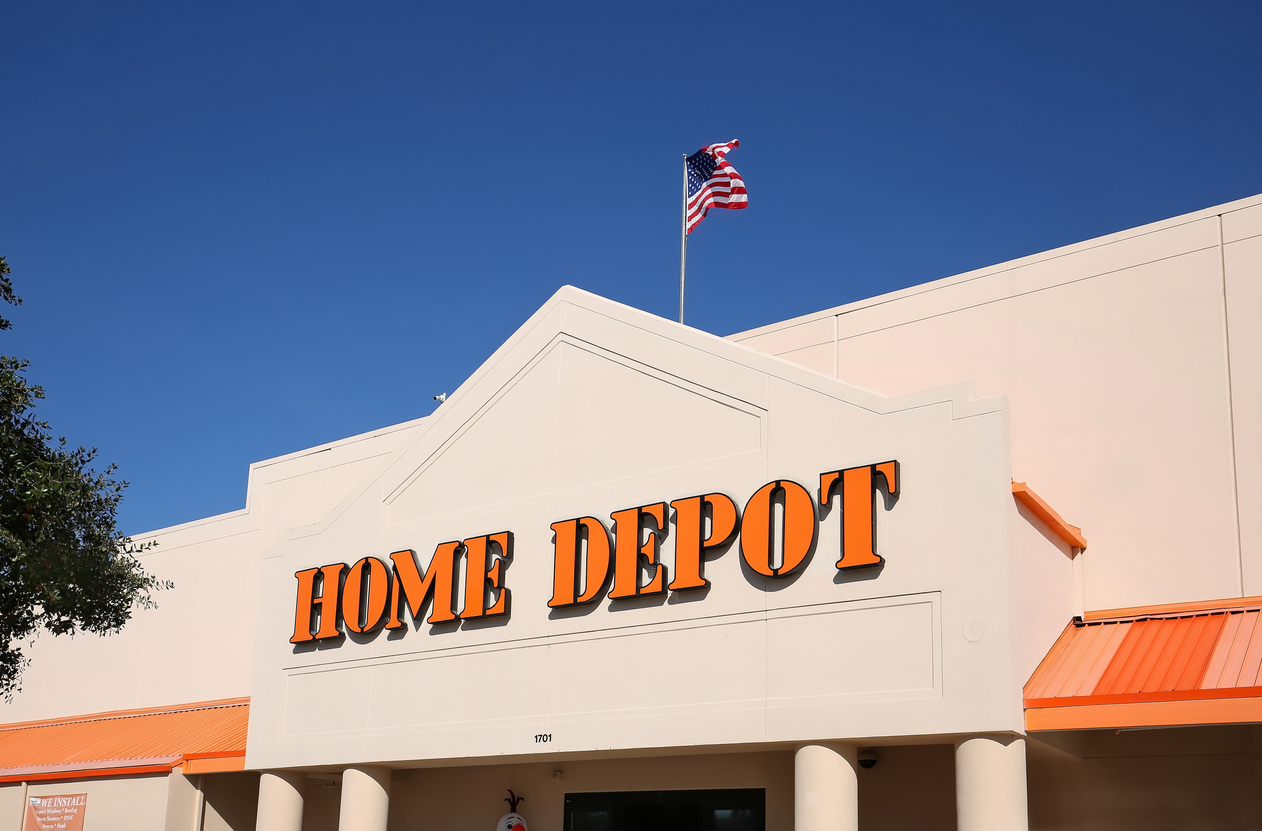Home Depot violated the National Labor Relations Act when the retail giant prohibited an employee from wearing an apron that said “BLM” in support of the Black Lives Matter movement, the National Labor Relations Board (NLRB) ruled on Feb. 21.
In a 3-1 decision, the NLRB said the worker had a right to display the handwritten insignia under federal law because it came amid complaints from a group of employees about racial discrimination at the New Brighton, Minn., store.
Home Depot broke the law when it conditioned the worker’s employment on removing the marking, according to the NLRB. The employee resigned after refusing to remove it.
“It is well-established that workers have the right to join together to improve their working conditions—including by protesting racial discrimination in the workplace,” NLRB Chairman Lauren McFerran said in a statement. “It is equally clear that an employee who acts individually to support a group protest regarding a workplace issue remains protected under the law.”
The NLRB called the employee’s refusal to remove the writing “concerted” because it was a “logical outgrowth” of previous employee protests about racial discrimination in their workplace and because it was an attempt to bring those group complaints to the attention of Home Depot managers.
As a result of the ruling, Home Depot is ordered to:
- Reinstate the employee.
- Provide back pay to the employee.
- Compensate the employee for any adverse tax consequences.
- Stop prohibiting its workers from taking part in “protected concerted activities.”
A spokesperson for Home Depot told The New York Times that the retail company is “fully committed to diversity and respect for all people” while adding that “we don’t tolerate any kind of workplace harassment or discrimination.”
Similar Cases Involving BLM Attire
The Home Depot ruling came months after the NLRB said that Whole Foods did not violate the labor rights of employees in 2020 when it disciplined them for wearing masks, pins and other accessories emblazoned with the “Black Lives Matter” slogan.
Ariel Sotolongo, an administrative law judge with the NLRB, concluded that wearing the apparel was not connected “with their employment or working conditions.”
“There is simply no evidence that there were any employee concerns, let alone complaints or grievances about racial inequality or any manner of racially based discrimination by Whole Foods Market prior to or at the time they started donning BLM messaging,” he wrote. “The evidence persuades me that the employer was merely trying to avoid controversy and conflict at its stores, which it believed BLM messaging would invite.”
In another case, NLRB Judge Mara-Louise Anzalone determined in May 2023 that Fred Meyer Stores, a supermarket chain based in Portland, Ore., illegally disciplined employees for wearing buttons, face masks and other attire expressing support for the Black Lives Matter movement.
She said the discipline violated the workers’ rights to voice their opinions about working conditions.
Upon the Fred Meyer ruling, Michael Elkins, an attorney with MLE Law in Fort Lauderdale, Fla., told SHRM Online that if dress codes aren’t enforced consistently, the discrepancies can lead to discrimination or retaliation lawsuits.
“Consistency is key,” he said. “Employers should make sure management understands the policies and that they’re applied equally across the board.”
No One-Size-Fits-All Solution
Andrew Gordon, an attorney with the law firm Hinshaw & Culbertson LLP in Fort Lauderdale, Fla., noted that the NLRB is a federal agency specifically tasked with protecting the rights of employees in the workplace.
“Because of this, historically, the NLRB has been much more employee-friendly and typically looks for ways to expand employees’ rights in the workplace,” he said. “It appears the NLRB has decided to use this case as a way to provide employees with even more latitude to engage in what the NLRB considers to be ‘concerted activities’ for ‘mutual aid or protection’ under Section 7 of the National Labor Relations Act.”
Gordon wants HR professionals to know that there is no one-size-fits-all legal solution to many issues in the workplace. Instead of taking a hardline approach, he explained, employers should look for “practical and pragmatic solutions” to these issues and resolve them in a way that works for everyone involved.
He added that companies, especially ones in states like Florida that lack a widespread union presence, should also be aware that the National Labor Relations Act covers most employers “and that workplace activities like the one in this case must be analyzed, at least in part, by considering potential NLRB-related problems with proposed solutions.”
An organization run by AI is not a futuristic concept. Such technology is already a part of many workplaces and will continue to shape the labor market and HR. Here's how employers and employees can successfully manage generative AI and other AI-powered systems.




